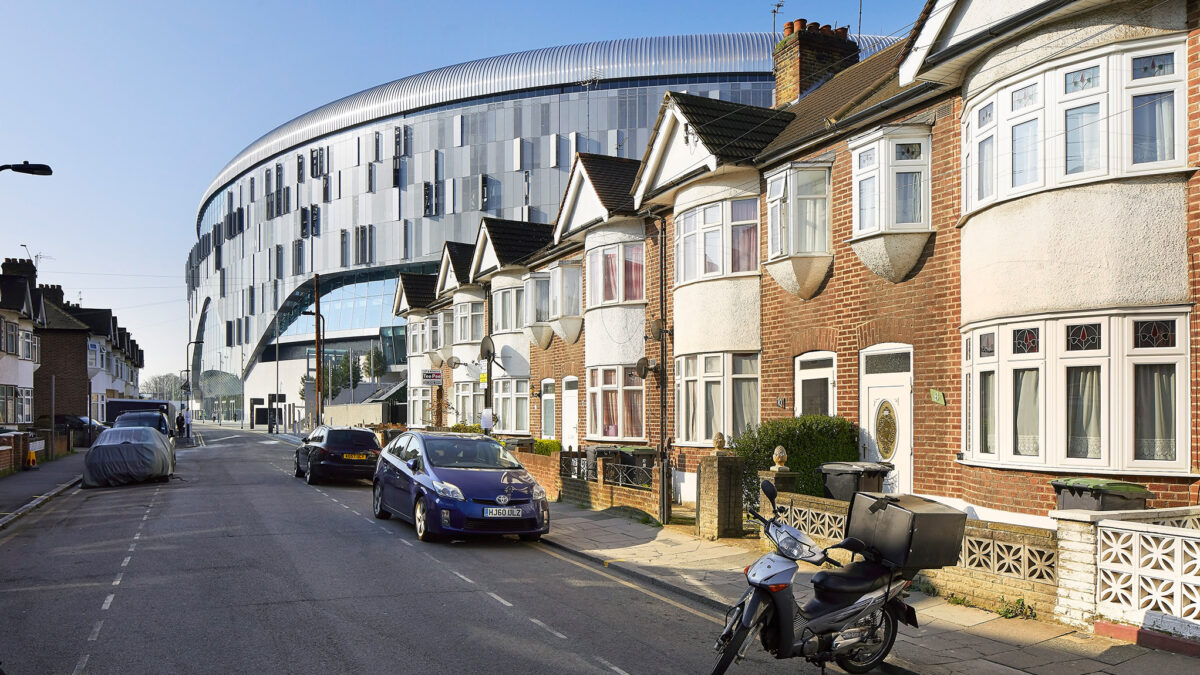Perspectives

July 1, 2021

As the 2020 UEFA European Football Championship approaches the Quarter Final stage, Christopher Lee, Managing Director EMEA, takes us through the key architectural considerations for designing the best holistic fan experience.
Gone are the days when stadium design was seen as simply an ‘engineering’ activity, where stadiums were relocated to the outskirts of our cities, connected by highway overpasses, and surrounded by acres (and acres) of carparking.
Part of the move to architect-led stadium design can be observed within the building’s location. From our earliest days as a practice in the 1980’s, Populous has believed that stadiums were far more than just engineering projects – that stadiums were indeed the ‘Cathedrals’ of our time and demanded an appropriate location and architecture. We worked with cities, with clients, with communities, and with local businesses to create truly sports-led masterplans. We moved our beloved teams and stadiums back into the communities where they had been born and harnessed the catalytic power of improved transportation, community facilities, and footfall – providing our clients and our communities with 365-days-a-year revenue streams.
If it doesn’t feel like home, it won’t be home. You can’t simply slap a badge on a new building or recreate a pastiche historical part of an old stadium and give it the heritage of decades of games, and hundreds of thousands of moments of joy and heartbreak. A deep understanding of a club, its history, and its supporters allows our designers to infuse our holistic architecture with the DNA of the club – a spirit that encompasses the heritage of our clubs whilst looking towards a bright future. Holistic design is the key to creating modern icons that are imbued with a proud individual identity.
It’s all about atmosphere – that crackling excitement that radiates through a crowd. That deafening wall of noise from the home team supporters or the special feeling of being part of a community sharing unique moments. The ‘design’ of atmosphere is where the science and art of architecture meet. You can’t engineer it. It’s part of the magic of carefully designing all the architectural elements together – to create something greater than the sum of its parts.
Proximity comes in two categories – fans to the action, and fans to one another. Throughout our history, Populous has always pushed to get fans as close to the pitch as possible, so that they can see every movement and experience every moment together. Now you might think that all stadium bowls are the same, but they are far from identikit. Every bowl that we have ever designed is unique to the client, the club, the heritage, and the fans.
Obviously, things are different right now. In July 2021, many fans are still being kept apart due to social distancing measures designed to help curb the impacts of the Covid-19 pandemic. Populous has been working closely with clubs from around the world to plan for spectators’ safe return.
As architects and designers, we’re always thinking about how a building will be used in the future. With technological advancements coming at an ever-increasing pace, buildings need to keep up with every trend in crowd behavior and societal development. While the phone in our pocket gets smaller and smaller, the digital screens in our stadiums are getting bigger and bigger. That’s not just because they can, but because people want to experience these moments together. Everyone watching the big screen together is still a much better experience than everyone watching their own small one separately.
Innovation is also about big technologies – like 9,000-tonne moving pitches and closing roofs. These elements are designed into the fabric of the design from the very start, allowing every venue to do more and to offer more to its fans. It’s the revolutionary sliding pitch at the New Tottenham Stadium created by our architects that drove the entire design of the stadium, or the moving roof at Wimbledon Centre Court that brought the majestic tennis facility into the 21st century.
OK, I had to throw in a sixth. Because although the fan experience has always been personal, from where you go before a game, to what you eat there, to how you celebrate or commiserate the result, technological advances in everyday life have meant that everyone has more choice in what they spend their money on, and the content that you can receive is ever increasing. We design experiences for all fans. Experiences and choice drive the design of our stadiums – from high-end tunnel clubs to fantastic high-quality street food markets, from a wet Tuesday evening with your mates to a sunny Sunday afternoon with your partner. We design experiences.
Lorem ipsum dolor sit amet consectetur, adipisicing elit. Non facere corporis et expedita sit nam amet aut necessitatibus at dolore enim quis impedit eius libero, harum tempore laboriosam dolor cumque.
Lorem, ipsum dolor sit amet consectetur adipisicing elit. Illo temporibus vero veritatis eveniet, placeat dolorem sunt at provident tenetur omnis, dicta exercitationem. Expedita quod aspernatur molestias eum? Totam, incidunt quos.